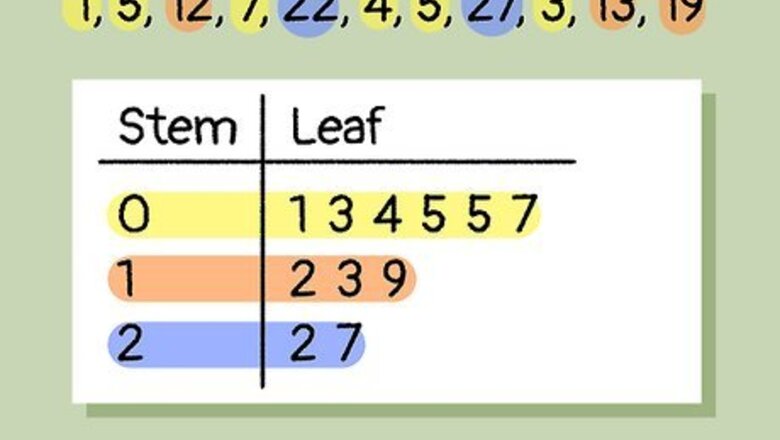
views
- Stem and leaf plots are charts that organize and separate multiple numbers in a data set by place value.
- The stem section contains digits in the tens (and sometimes hundreds) place while the leaf section contains digits in the ones or tenths place.
- Read the plot key at the top or bottom of a plot to understand what each of the numbers in the plot represent, and if the data includes values with decimals.
- Stem and leaf plots make it easy to find averages, write bar graphs, and calculate distribution curves.
What is a stem and leaf plot?
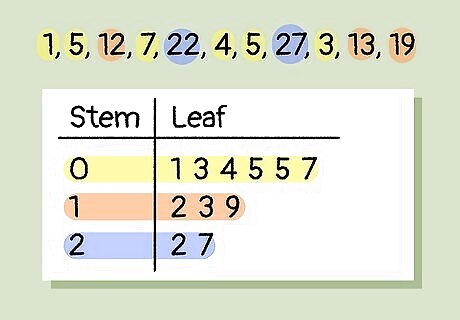
A stem and leaf plot is a chart that helps sort a set of multi-digit numbers. The digit(s) with the highest place value goes in the stem category, while the digit with the lowest place value goes in the leaf category. Stem and leaf plots are great ways to visualize an entire set of data at once.
How to Interpret a Stem and Leaf Plot
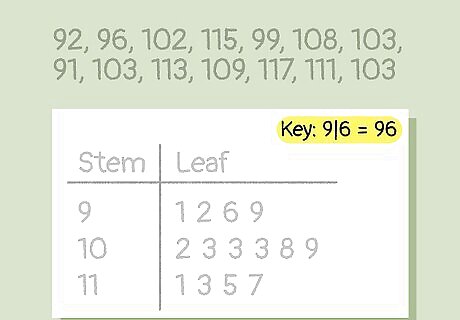
The plot key explains what the numbers represent. A stem and leaf plot will have a key noting the meaning of its values at either the top or bottom of the page, usually with an example number to convey which values (tens, hundreds, decimals) are being shown.
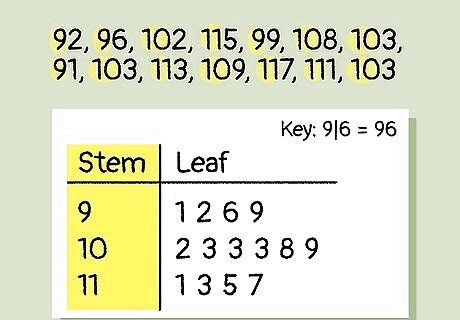
The stem column contains digits in the tens or hundreds place. The stem column is representative of the first, larger portion of a data point (usually a digit with a place value in the 10s or 100s). For example, if a stem column has the numbers 9, 10, and 11, that means the column is representative of all numbers in the 90s, 100s, and 110s. You can add a 0 to the stem number to understand what value it conveys.
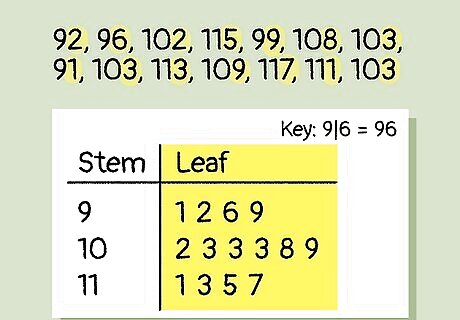
The leaf column contains digits in the ones or tenths place. The leaves show the smaller portion of a data point, usually either the ones place or decimal place. If the numbers in the leaf column are 3, 5, and 9 next to a stem number of 8, that means the numbers represented are 83, 85, and 89. Sometimes, a stem plot will be used to separate numbers with decimals. For example, instead of the stem value being 80+3, it would be 8.0+3, making for a total of 8.3. Reading the plot key should tell you the place values of all the data.
How to Make a Stem and Leaf Plot
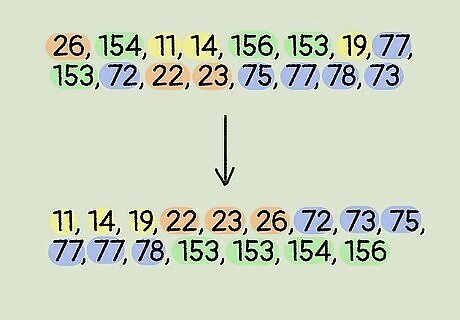
Write down all your multi-digit numbers in numerical order. Assemble all the numbers in your data set and order them from lowest value to highest value. Repeat numbers are okay; just make sure every integer is accounted for.
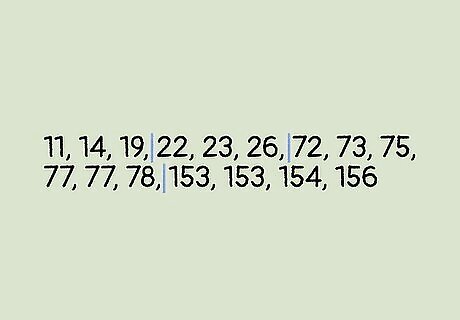
Separate your numbers by their starting digits. Once you have all the numbers in your data set written in front of you, draw a line to section off each group of numbers with a different starting digit. For example, put all numbers that start with 1 followed by a single digit (11, 14, 19) in their own section. Put all numbers that start with 2 followed by a single digit (22, 23, 26) in their own section and so on until all numbers are categorized in sets. These sets will become the rows in your stem and leaf plot.
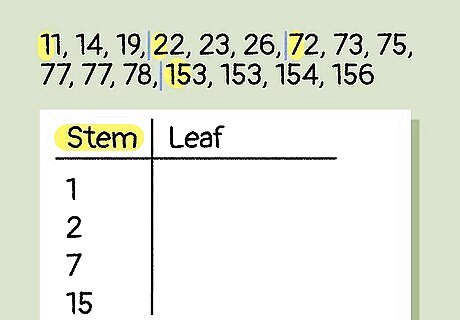
Place starting digits in the stem column in numerical order. Take the digit(s) with the highest place value from each category and give it its own row in the stem column. Organize these rows with the lowest value at the top and the highest value at the bottom. Double check to ensure you have no repeat numbers. Numbers in the stem column can contain multiple digits as long as the values in the leaf column are all single digits.
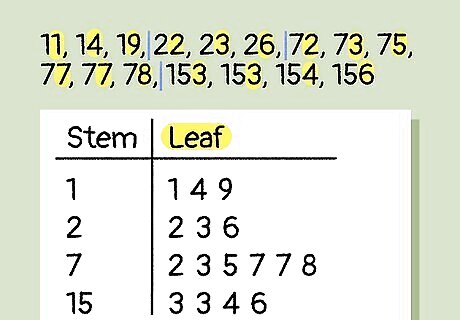
Add all remaining numbers to their appropriate row in the leaf column. In the leaf column, write the single, remaining digits with the lowest place values next to their corresponding category with commas separating each one. Place each leaf digit next to the digit it stems from. For example, numbers 153, 153, 154, and 156 would have 3, 3, 4, and 6 next to the 15 stem. All numbers from 70-79 would go on the leaf side of 7 and so on.
Why use a stem and leaf plot?
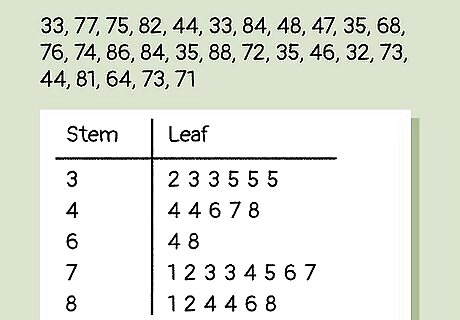
Stem and leaf plots help show large sets of data at once. A stem and leaf plot shows every single point in a data set in one easy-to-access place. Without a stem and leaf plot, you would have to go through the inconvenient, time-consuming process of looking up every individual number in your data set any time you wanted to refer back to it.
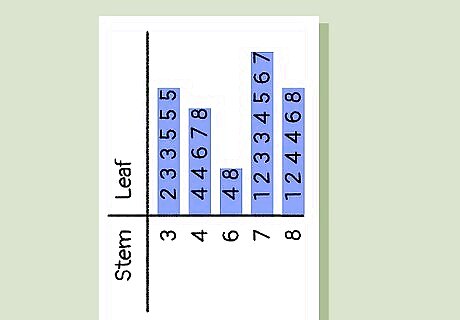
Stem and leaf plots are the basis for bar graphs. If you turn a stem and leaf plot sideways, it actually makes a perfect bar graph, with the most commonly occurring numbers creating the highest bar.
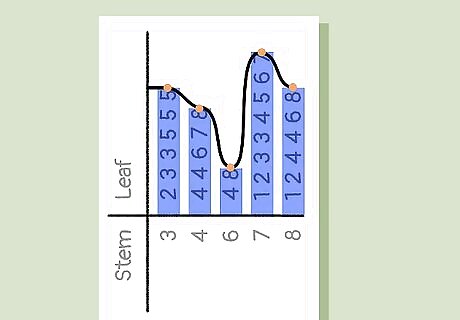
Stem and leaf plots are the basis for curves. By tracing the top points of a sideways stem and leaf plot from beginning to end, you can easily visualize the distribution curve among your set of data.
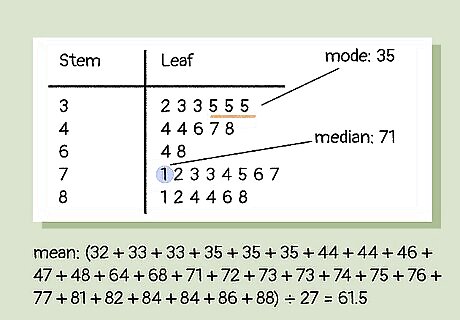
Stem and leaf plots make it easy to calculate averages and outliers. Because stem and leaf plots show all the numbers in a set of data, calculating numbers like mean, median, and mode is easy with the help of these charts. Stem and leaf plots’ tightly-grouped rows also help highlight any outlying numbers.




















Comments
0 comment